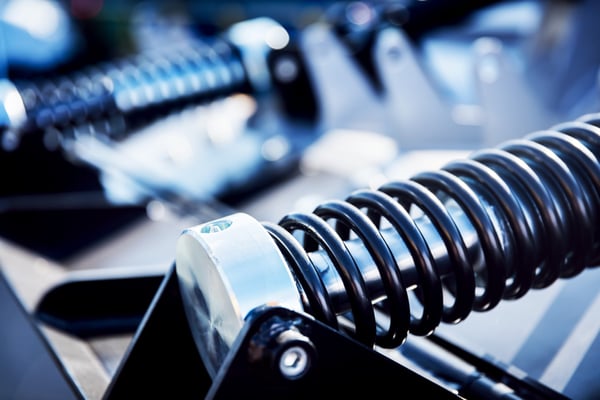
When talking about today’s motion control solutions, engineers tend to think in terms of motors and cylinders. True, those can provide movement, but so can mechanical motion control, which has come a long way in terms of complexity and quality.
Still, a mechanical solution is usually less complicated, less expensive, and more reliable. Plus, it has the advantage of not needing power nearby!
Motion control engineering is a broad field. This comparison of electronic and mechanical motion control should set you on your way toward the proper solution for your product.
Defining the Types of Controlled Motion Solutions
There are two primary types of controlled motion solutions:
- Electronic motion control
- Mechanical motion control
1. Electronic Motion Control
This type of motion control typically consists of using a motor to achieve movement. The most common is electric linear motion control, but rotational, oscillating, and reciprocating movement are also important to industrial product design. Many engineers describe such systems as “electromechanical” (though we prefer “electronic” because it distinguishes motor-based systems from purely mechanical setups).
2. Mechanical Motion Control
A simpler motion control solution, a mechanical motion control could just be a pivot-style hinge. Many, however, include some kind of stored-energy device for velocity and acceleration control. Where some mechanical solutions different from pneumatic motion control is that they use metal springs instead of air or gas cylinders (like you’d see on the back door of an SUV).
Motion Control Solutions in Action
Using the magic of motor rotation to create linear movement adds complexity to a motion control solution. Here’s an example of a typical application for an electromechanical actuator.
Typically, the motor turns a nut on a lead screw assembly to move a rod in and out. Simple systems will have limit switches at each end of the movement range. More sophisticated solutions include encoders for feedback on position, speed, and so on. Then some form of PID (proportional–integral–derivative) control is usually applied, which in turn requires control electronics and some programming capability.
Contrast this with mechanical motion control engineering. Creative application of springs, hinges, and counterbalances can achieve the same motion as the electronic system with less complexity and more elegance from a product design standpoint.
A Comparison of Controlled Motion Solutions
A mechanical solution can do many things very well. It’s robust and reliable because there’s very little to break. It can provide smooth, controlled opening, and closing to avoid damage or noise from jarring impacts. This not only provides a measure of safety, but also a sense of luxury to the buyer.
Mechanical means are also less expensive because they don’t need a motor, cables, or a controller. Most importantly, they don’t need a power supply. That makes mechanical assemblies ideal for devices far from an outlet or where batteries are too heavy and expensive.
There are some things mechanical motion control can’t do, or can’t do as well as an electronic system. Remote operation is the obvious example (although a remote release or latch may be possible). There’s no easy way to change velocity and acceleration profiles. And mechanical systems are designed for a limited range of load or force. (Safety features can protect against overloading.)
In electronic linear motion control, if the load increases, the motor can respond with more torque. A spring-based system will always apply a consistent force. In some cases, this is exactly what the application needs. In others, a strict load limit is a burden. A standing desk that can’t carry 25+ lbs. will be unusable in certain applications.
Motion Control Engineering & Data
Everywhere you turn, people are looking to get data out of their devices. Depending on the device and its application, data often sought includes that which can only be obtained while in use, such as:
- Position
- Temperature
- Number of cycles
- Load
- Torque
Electronic/electromechanical motion control has an advantage here: Feedback systems provide some data by default. It’d certainly be convenient to get a signal about a smoker lid being left open or receive a cycle count on a retraction mechanism.
IoT-style data from your mechanical systems might be the future of motion control services. This combination of reliable mechanics and feature-adding electronics can give your product design the best of both arguments!
Finding a Compromise in Your Motion Control Design
The future of your product line may require looking at both the flash of electronics and the functionality of mechanics. Electronics can provide remote and IoT solutions, while mechanical springs, hinges, and counterbalances can add sturdy, long-term support.
If you have a question about what your motion control design needs to succeed, ask an engineer below:
(Editor's note: This article was originally published in May 2020 and was recently updated.)
.png?width=12000&height=2033&name=WeberKnappLogo_white%20(1).png)


